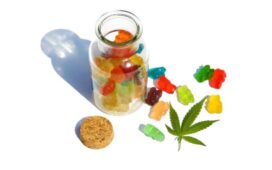You may have heard people talking about dabbing but may still wonder what is dabbing. A dab isn’t referring to the dance that younger kids are doing, though it goes by the same name. This particular type of dab is a wax consisting of a high concentration of THC. It’s a dangerous and potentially addictive substance.
General Information About Dabbing
A dab is produced when butane oil comes in contact with the active ingredient in marijuana. The end result is a substance with a high concentration of tetrahydrocannabinol THC — the component of marijuana that has psychoactive properties. In general, the substance has between 10 and 80 percent THC concentration. It comes in different forms and may be called shatter, budder, butane hash oil, or wax.
Although it’s just now gaining popularity, dabs aren’t a new concept. It was actually first used in the 1960s.
Most people who use budder are teens and young adults up to age 25. They smoke it using a vaporizer or a charcoal puck.
In Colorado and California, people may legally partake in dabbing.
Safety
When answering what is dabbing, you should understand the safety concerns revolving around this substance. For instance, you may experience short-term side effects, such as drowsiness and short-term memory loss. You may have a sense of timelessness and will have concentration problems. Your inhibitions may be lowered, and you might develop slowed speech.
In the long run, you could develop anxiety and depression
Addictiveness
Since the THC in a dab is more potent than marijuana, your chances of addiction from dabbing are higher than if you would smoke a standard strain of marijuana.
A dab can have a THC content four times greater than a high-grade strain of marijuana. A top-shelf strain may have a THC level of up to 20 percent.
At first, you may notice you need more and more dab to achieve the same effect. This is also known as developing a tolerance.
You could also develop a physical dependence on the drug. For instance, when you don’t use it, you may become depressed or anxious. Some people develop an upset stomach when they don’t use it.
Dab withdrawal can cause you to have restless nights and a decrease in appetite. You might experience irritability, mood changes, or depression. Vivid dreams are often part of the withdrawal process as well.
You may not be able to control your dab use well or struggle trying to control it. Additionally, you may suffer from the negative effects of dabbing and will still continue to use it.
A dab isn’t a new concept but is continuing to become a more popular one. It’s more potent than marijuana with a much higher addiction rate.
















